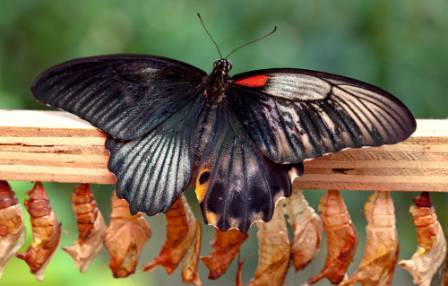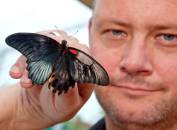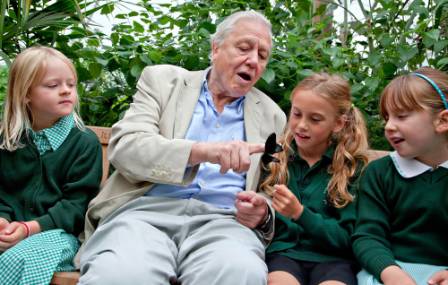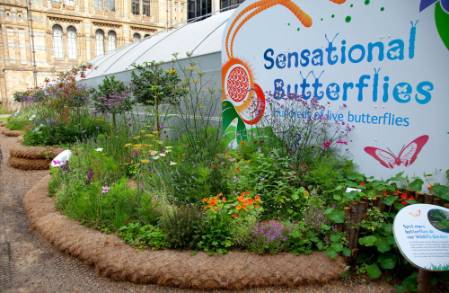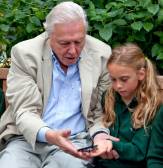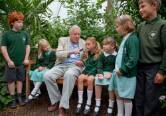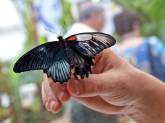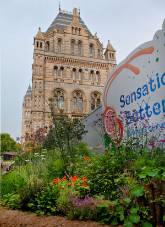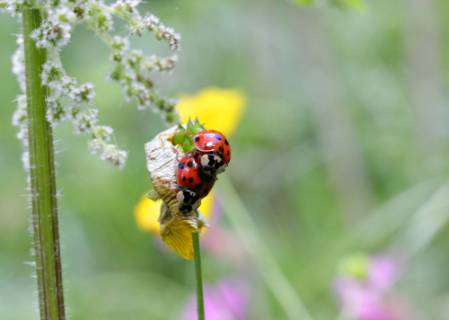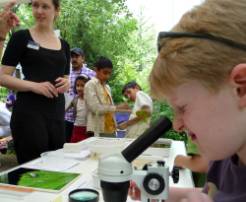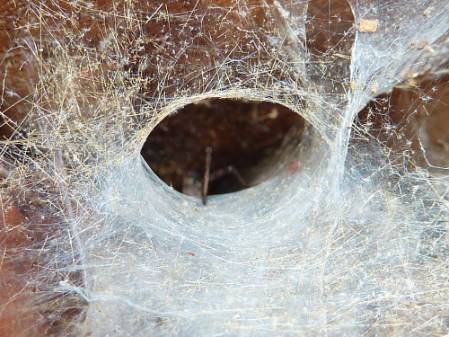The Museum's Sensational Butterflies exhibition is definitely the fluttery flavour of the week. Not only has an incredibly rare half-female-half-male butterfly hatched in the exhibition's butterfly house very recently, Sir David Attenborough also made a very special appearance there today.
The rare dual-sex butterfly recently hatched in our Sensational Butterflies exhibition is a great mormon, Papilio memnon, from Asia. One half is female, with paler colours and blue, red and tortoiseshell flecks. The other half is male and is darker.
The discovery of this unusual dual-sex butterfly - such creatures are called gynandromorphs - caused huge excitement in the Sensational Butterflies exhibition when it was originally spotted. Gynandromorphy happens very occasionally across a range of species, from spiders to crabs. The word comes from gyn which is Greek for female and andro which is Greek for male.
Luke Brown (below right), manager of the exhibition's butterfly house says:
'Pure bilateral gynandromorphs are incredibly rare. I have only ever come across two in my whole career. So you can understand why I was bouncing off of the walls when I learned that a stunning half male, half female bilateral gynandromorph had emerged in the puparium at this year’s Sensational Butterflies exhibition. Many permanent butterfly exhibitions will go through their entire existence without ever seeing one of these rarities.’
The gynandromorph butterfly, however, may not be around for much longer. These species, sadly, only live for two to three weeks.
Read the news story and learn more about the gynandromorph discovery at Sensational Butterflies
Our other exciting and famous visitor to Sensational Butterflies today, which some lucky schoolchildren were lucky to catch a glimpse of, was Sir David Attenborough. He was here to help launch the Big Butterfly Count project organised by the Butterfly Conservation group which asks us to help record butterfly sightings from 16 to 31 July.
Children from The Russell School in Richmond with Sir David Attenborough are charmed by a swallowtail at the Big Butterfly Count launch in our butterfly house this morning.
'Butterflies are one of the stars of the British countryside. Summer just wouldn’t be summer without them' says Sir David
It's the second year running for the Big Butterfly Count and last year more than 10,000 people took part with 189,000 butterflies counted This year's results may help reveal the impact of our record-breaking spring weather.
Our Sensational Butterflies exhibition with its butterfly house full of 100s of live exotic butterflies and moths is highly recommended for a summer holiday visit. Open until 11 September 2011. Tickets £3.50.
As you approach the butterfly house marvel at the glorous outdoor garden (above) where you can learn butterfly-attracting tips for your own garden. Inside the butterfly house, who knows what else may hatch in the coming months? You might even catch sight of the extraordinary Madagascar moon moth (right). But remember when you visit, it's hot, hot, hot in the house, 'cos that's the way the butterfly beauties like it.
Find out about our Sensational Butterflies exhibition
See some exhibition highlights
Buy Sensational Butterflies tickets online
The nationwide OPAL Bugs Count also asks you to look for butterflies, in particular the small tortoiseshell butterfly. There are a humungous 380,041 bugs counted so far at the time of writing, but it grows larger every minute!
Learn more about the butterfly life cycle



